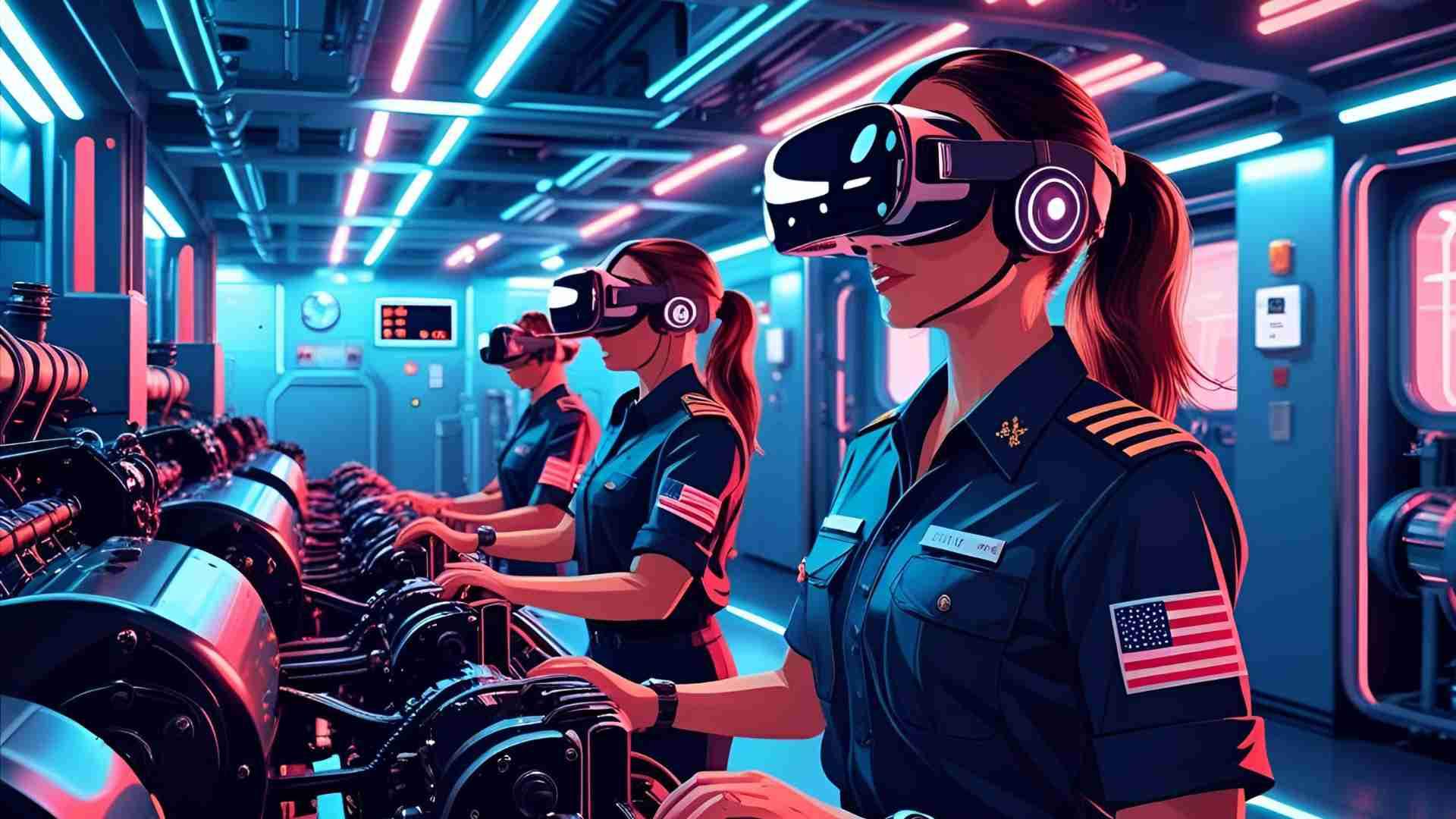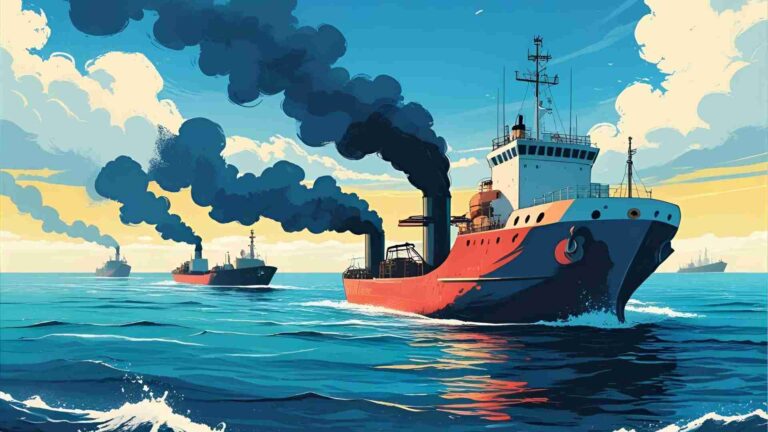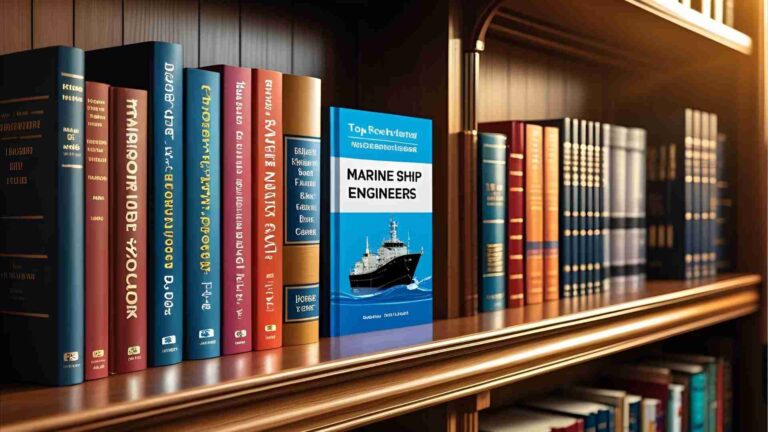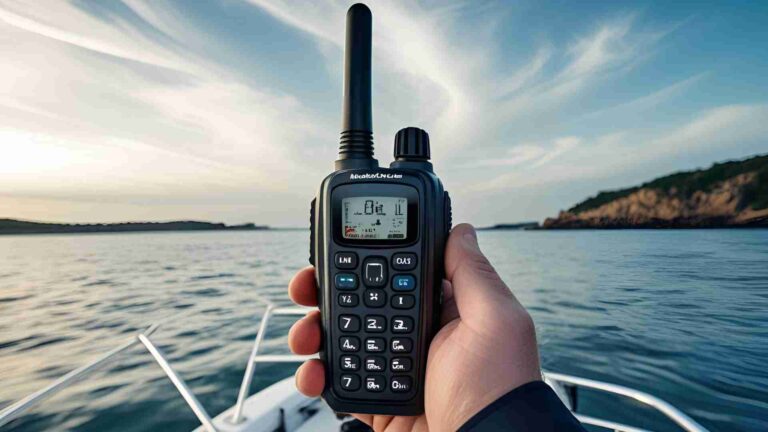VR & Simulation-Based Learning for Engine Room Officers
Discover how VR and simulation-based learning revolutionize engine room officer training with immersive, cost-effective, and STCW-compliant solutions.
Virtual Reality (VR) and simulation-based learning are transforming maritime training, particularly for engine room officers. These technologies create immersive, risk-free environments where trainees can master complex tasks, troubleshoot emergencies, and align with international standards like the Standards of Training, Certification, and Watchkeeping (STCW). By leveraging platforms like Immerse and frameworks such as Google’s ARCore and Apple’s ARKit, maritime institutions and shipping companies are equipping officers with skills that enhance safety, efficiency, and environmental sustainability. This article explores how VR and simulation-based learning are reshaping engine room training, their benefits, real-world applications, challenges, and future potential.
What Is Simulation-Based Learning for Engine Room Officers?
Simulation-based learning uses advanced software and VR to replicate real-life engine room operations. Trainees interact with digital control panels, practice emergency protocols, and develop critical decision-making skills in a controlled environment. When paired with VR headsets, such as the HTC Vive Pro, trainees are immersed in a 360° digital engine room, allowing them to navigate, operate machinery, and respond to scenarios as they would onboard a ship. These simulations range from full-mission engine room simulators (ERFMS) to cloud-based platforms, offering flexibility and accessibility.
Key Components of Simulation-Based Training
- Full Mission Simulators (ERFMS)
- Replicate main and auxiliary systems like diesel generators, boilers, pumps, and compressors.
- Include alarms, fault diagnosis, and emergency handling.
- Examples: Kongsberg K-Sim Engine, Transas ERS 5000.
- VR-Based Hands-On Training
- Trainees navigate 3D engine rooms, interact with equipment, and simulate tasks like valve alignment or fuel leak response.
- Features voice commands, haptic feedback, and eye-tracking for realism.
- SCADA & PLC Simulations
- Train officers in automation, focusing on programmable logic controllers (PLCs) and supervisory control systems.
- Teach system integration and process optimization.
- AI-Driven Performance Analytics
- Provide real-time feedback on response times, decision accuracy, and safety compliance.
- Enable personalized coaching and certification assessments.
Why VR & Simulation-Based Learning Matters
Traditional engine room training faces challenges like limited access to operational engine rooms, high costs of physical simulators, and safety risks during live drills. VR and simulation-based learning address these issues by offering standardized, repeatable, and risk-free training environments. According to the International Maritime Organization (IMO), human error contributes to over 75% of marine accidents, often due to inadequate training or poor decision-making under pressure. VR and simulations mitigate these risks by allowing trainees to practice high-stakes scenarios safely.
Challenges of Traditional Training
- Limited Access: Operational engine rooms are not always available for training due to active ship operations.
- High Costs: Full-mission physical simulators require significant investment and maintenance.
- Inconsistent Experiences: Training quality varies across locations and instructors.
- Safety Risks: Live drills pose risks to trainees and equipment.
How VR & Simulations Solve These
- Standardized Training: Consistent scenarios ensure uniform skill development.
- Safe Failure: Trainees can make mistakes without real-world consequences.
- Cost Reduction: VR headsets and cloud platforms are more affordable than physical simulators.
- Remote Access: Training can be conducted anywhere, reducing travel costs.
Benefits of VR & Simulation-Based Learning
VR and simulation-based learning offer transformative benefits for engine room officers, maritime academies, and shipping companies. These technologies enhance learning outcomes, ensure regulatory compliance, and promote sustainability.
| Feature | Impact |
|---|---|
| Immersive Practice | Replicates real-world engine room stress and complexity. |
| Standardized Curriculum | Aligns with STCW standards for consistent global training. |
| 24/7 Accessibility | Enables remote learning via smartphones or VR headsets. |
| Team Training | Multi-user simulations foster communication and teamwork. |
| Cost-Effective Scaling | Reduces fuel, machinery wear, and live drill expenses. |
| Safety-First Learning | Eliminates real-world risks while improving emergency preparedness. |
Key Benefits
- Enhanced Immersion: VR places trainees in realistic engine rooms, boosting engagement and retention. Studies show VR-trained individuals retain over 80% of skills compared to 20–30% from traditional methods.
- Risk-Free Practice: Trainees can simulate emergencies like engine fires or blackouts without endangering lives or equipment.
- Cost-Effectiveness: While initial investments are required, VR reduces long-term costs by minimizing fuel consumption and equipment wear.
- Personalized Learning: AI-driven analytics tailor training to individual needs, improving skill development.
- STCW Compliance: VR platforms align with IMO model courses, ensuring certification readiness.
- Sustainability: Simulations reduce the environmental footprint by eliminating fuel-intensive drills, supporting Sustainable Development Goals (SDGs) like SDG 12 (Responsible Consumption) and SDG 13 (Climate Action).
Real-World Applications
VR and simulation-based learning are already transforming maritime training through innovative platforms and programs. Below are notable examples:
- VR-Ship Engine Room Simulator (Adriacom)
- Developed with the University of Rijeka, this simulator offers a fully immersive experience for maritime engineering students.
- Trainees perform diagnostics, manipulate control panels, and practice procedural walkthroughs.
- Features real-time feedback and performance monitoring.
- Immersive Virtual Reality (IVR) Marine Engine Training System (Dalian Maritime University)
- Utilizes HTC Vive Pro for head-mounted display training.
- Simulates engine room operations with high-fidelity visuals and interactions.
- Wärtsilä Engine Room Simulator
- Offers 3D visualization of ship compartments.
- Allows trainees to adjust controls and access local operation posts in a virtual environment.
- GDS Engine Room Simulator
- Used in SIRE 2.0 hands-on training.
- Supports both online and face-to-face sessions, enhancing flexibility.
Case Study: European Maritime Academy
A European maritime academy implemented a hybrid VR and ERFMS program, reducing classroom time by 40% and improving exam pass rates by 32%. Trainees practiced emergencies like cooling system failures and routine tasks like fuel bunkering, demonstrating improved confidence and competence.
Common Training Scenarios
- Emergency Response: Engine fires, blackouts, cooling system failures, and bilge system activation.
- Routine Operations: Lube oil circulation, fuel transfer, valve alignment, and pre-departure checks.
- Troubleshooting: Diagnosing sensor failures, responding to out-of-limit parameters, and analyzing control loops.
Challenges of VR & Simulation-Based Learning
While VR and simulations offer significant advantages, they also present challenges that must be addressed for widespread adoption.
- Initial Investment
- Developing VR content and purchasing hardware (e.g., HTC Vive Pro, priced at ~$1,500) requires upfront costs.
- Solution: Affordable options like Google Cardboard (~$10) and cloud-based platforms reduce barriers.
- Technical Issues
- Low resolution, latency, or hardware failures can disrupt training.
- Solution: Modern headsets with 4K displays and reliable cloud platforms mitigate these issues.
- Physical and Psychological Effects
- Motion sickness, eye strain, or disorientation may affect some users.
- Solution: Gradual exposure and ergonomic headset design minimize discomfort.
- Skill Requirements
- Trainees need familiarity with VR technology and engine room operations.
- Solution: User-friendly interfaces and pre-training tutorials bridge the gap.
- Standardized Frameworks
- Lack of standardized instructional frameworks can hinder STCW compliance.
- Solution: Collaboration between educators, software developers, and regulators ensures alignment with MET standards.
- Ethical and Legal Concerns
- Privacy, data security, and liability issues require clear policies.
- Solution: Robust cybersecurity measures and transparent regulations protect stakeholders.
Latest Trends & Future Outlook
The maritime industry is embracing advanced technologies to enhance training. Emerging trends are shaping the future of engine room education, ensuring officers are prepared for increasingly automated and sustainable ships.
Key Trends
- Cloud-Based Platforms
- Enable global access to training modules, reducing travel costs.
- Example: Wärtsilä’s cloud-based simulator allows remote training with identical scenarios to physical setups.
- Gamified Assessments
- Incorporate game-like elements to boost engagement and retention.
- Example: Leaderboards and scenario-based challenges motivate trainees.
- AI-Coached Training
- AI tailors learning paths based on performance, optimizing skill development.
- Example: Real-time analytics track decision accuracy and response times.
- Metaverse Integration
- Connects trainees and instructors in shared virtual environments for collaborative drills.
- Example: Multi-user VR simulations enhance teamwork across geographies.
- Digital Twin Technology
- Mirrors real engine room configurations for company-specific training.
- Example: Simulating low-emission engines prepares officers for sustainable technologies.
Forecast
By 2030, hybrid VR and simulation programs will dominate maritime education, driven by affordability and scalability. The integration of AI, cloud platforms, and digital twins will ensure training remains relevant to modern ship systems, supporting decarbonization and automation goals.
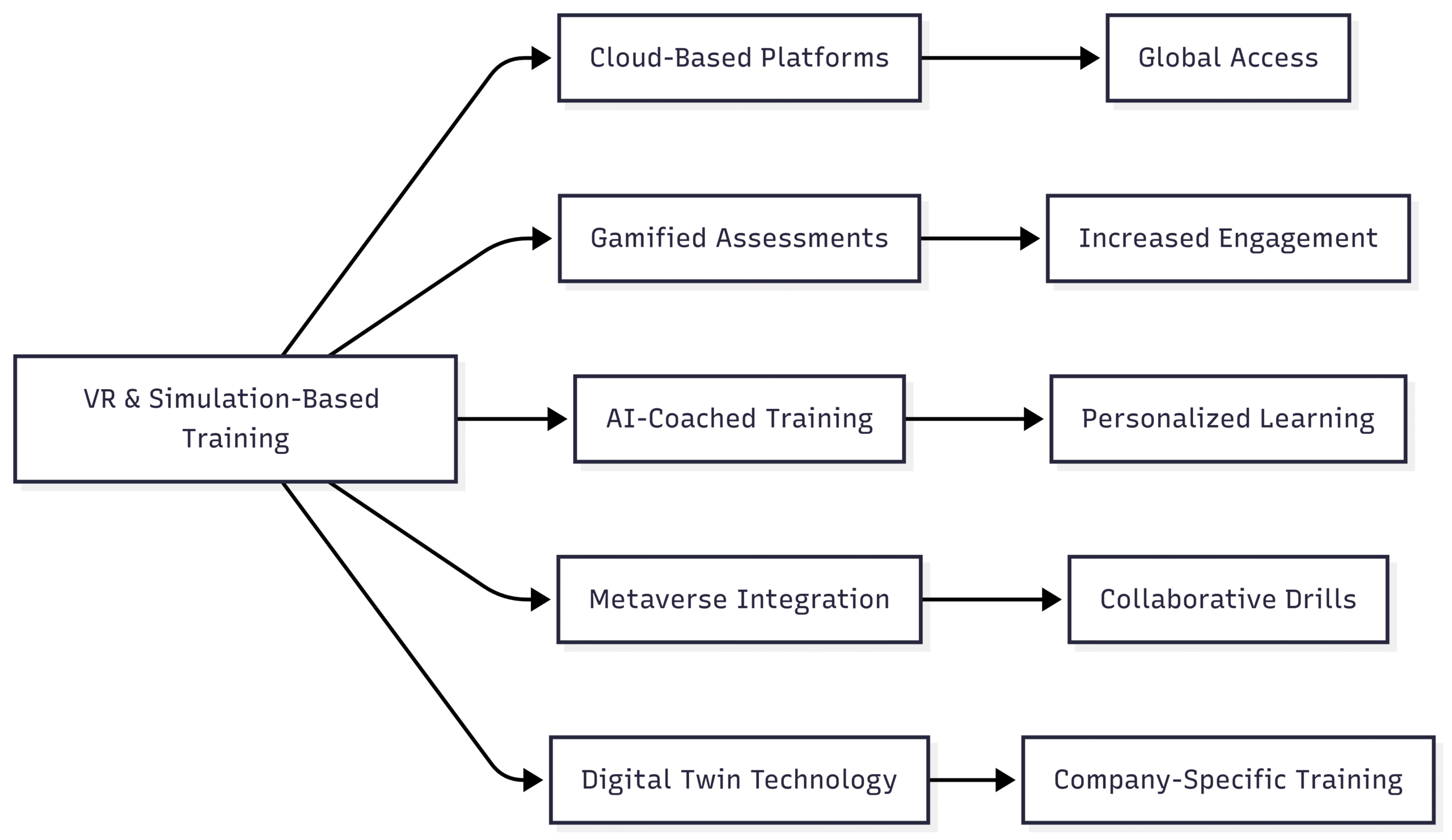
Supporting Sustainable Development Goals (SDGs)
Simulation-based training aligns with several SDGs, enhancing sustainability in maritime operations:
- SDG 4 (Quality Education): Provides immersive, accessible training modules that bridge theory and practice.
- SDG 9 (Industry, Innovation, and Infrastructure): Drives innovation through advanced technologies like VR and cloud platforms.
- SDG 12 (Responsible Consumption): Reduces fuel and resource use in training, promoting a circular economy.
- SDG 13 (Climate Action): Trains officers in low-carbon technologies, supporting decarbonization.
- SDG 14 (Life Below Water): Prepares crews to handle environmental incidents, minimizing marine pollution.
By minimizing reliance on physical resources, simulations reduce the industry’s ecological footprint while preparing officers for sustainable practices like optimizing fuel consumption or handling alternative fuels.
FAQs: People Also Ask
Is VR training STCW-compliant?
Can training be fully online?
Do ships use simulation training onboard?
Are VR platforms expensive?
Conclusion: Powering the Future of Maritime Training
As ships adopt smarter systems and stricter environmental regulations, engine room officers must be highly skilled and adaptable. VR and simulation-based learning provide immersive, cost-effective, and STCW-compliant training that prepares officers for real-world challenges. By reducing risks, enhancing retention, and supporting sustainability, these technologies are setting the standard for maritime education. Maritime academies, shipping companies, and officers should invest in VR and simulation tools to ensure competence, safety, and efficiency in the engine rooms of tomorrow.
Call to Action
Whether you’re a cadet, officer, or training director, embrace VR and simulation-based learning to stay ahead in the evolving maritime industry. Explore platforms like Wärtsilä, Kongsberg, or Immerse to transform your training programs today.
References
- IMO STCW Convention & Code
- Kongsberg Digital – Maritime Simulators
- DNV Maritime Training & Certification
- World Maritime University – Maritime Simulation Training
- Wärtsilä – Transas Engine Room Simulators
- Kim, T., et al. (2021). Simulation Training in Maritime Operations.
- Dewan, M., et al. (2023). Advancements in Immersive Maritime Training Technologies.
Happy Boating!
Share VR & Simulation-Based Learning for Engine Room Officers with your friends and leave a comment below with your thoughts.
Read MAN 175D Engines Selected for Carbon Capture Storage Application until we meet in the next article.
